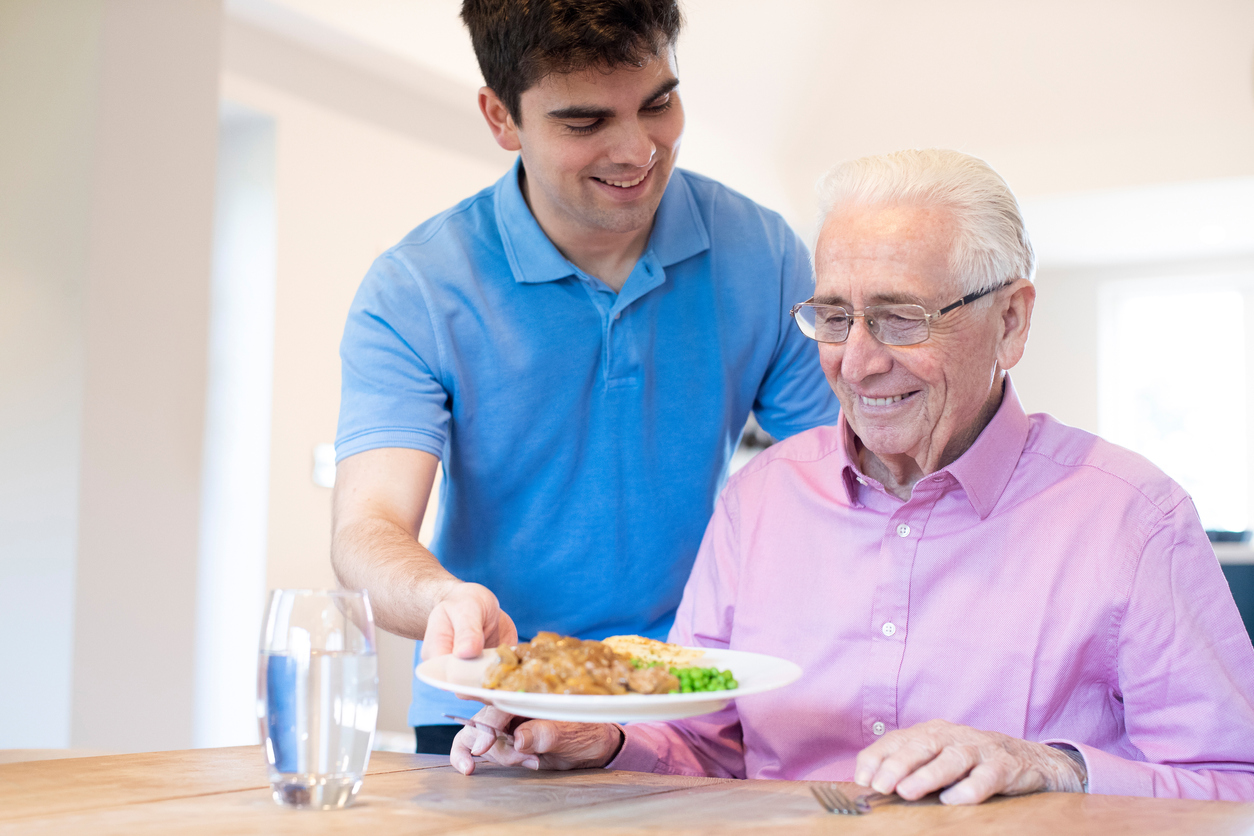The COVID-19 pandemic has had unexpected effects on care delivery in long-term care facilities. Despite efforts to combat the spread of the coronavirus SARS-CoV-2, serious health consequences marked a challenging time for caregivers. One of these consequences was that of declines in nutrition among nursing home residents. Nursing home insurance is only one part of a broader risk management strategy; focusing on boosting nursing home nutrition can also serve to improve patient care and to support positive outcomes for those who depend on these facilities for their healthcare needs.
Declines in Nutrition in the Wake of COVID-19
Long-term care facilities have experienced significant challenges as a result of the coronavirus pandemic. As lockdown and social distancing orders were implemented, many nursing home residents no longer had the option to join others for mealtimes and snacks. In most cases, patients took meals by themselves. A lack of social outlets and feelings of isolation caused many patients to reduce their caloric intake – including skipping meals entirely. Nursing homes curtailed visiting hours or eliminated outside visitors. This, coupled with overworked staff, has meant that poor eating habits may not have been discovered before they could have a negative effect on patients.
Nursing home residents are already at high risk for health complications related to malnutrition; the pandemic represented even greater risks as nutrition declined in many of the nation’s long-term care facilities. Patients infected by the coronavirus may have lost their senses of taste and smell, leading to patients shunning meals or simply not eating enough to sustain their overall health.
The effects of malnutrition in nursing home populations can lead to:
- Muscle weakness
- Loss of bone mass
- Weakened immune systems
- Increases in hospitalization rates
- Declines in wound healing
- Greater chance of fall injuries
With these risk factors in mind, it is clear that nutrition is a critical aspect of patient care. As a risk management practice to supplement the protections of nursing home insurance, improving nutrition can have powerful benefits for residents of these facilities.
Tips for Improving Nutrition in Nursing Home Patients
Tackling the nutrition-related challenges faced by long-term care facilities requires innovative thinking and the dedication of the entire facility staff. Some of the best practices for improving nutrition include:
A team approach for patient feeding – from nursing home managers to caregivers and support staff, the team can and should assist patients with mealtimes. Patients who have difficulties with feeding themselves can always use the help of a team member or assistive devices. Bringing the facility’s staff together at mealtimes strengthens the connection between staff and patients.
Offering sweat treats – for patients who may have lost their taste and smell, either to COVID complications or through aging, medication, or poor oral health, sweet foods like ice cream or cookies can encourage patients to eat. Ice cream may not be the ideal nutritional solution, but for patients losing weight, the calories alone can have positive effects on their overall health.
Readily-accessible beverages – all staff members should be instructed to offer drinks to residents whenever they are visited in their rooms. This has a two-fold benefit: it helps eliminate dehydration risks and also gives staff members a chance to note if patients are not eating or drinking. In addition to water and other drinks, meal replacement shakes may serve to stimulate nutrition in those patients who may otherwise show declines in food interest.
Focusing on food seasoning – as we age, our sense of taste naturally declines. COVID symptoms or side effects of medications may further these sensory losses. To reverse the effects of malnutrition, ensure that meal preparation staff are adding seasonings to foods. Dietary restrictions can be sidelined, particularly for patients who are at risk of unwanted weight loss or malnutrition.
Bringing back socialization – although COVID vaccines have reduced infection risks among nursing home populations, large gatherings still represent a potential health hazard. Socialization is an important part of mealtimes, and it is a smart practice to bring some of this socialization back to nursing homes by balancing benefits and risks. Ideas include themed meal events, specialty foods like take-out items, decorations, and small group gatherings.
Training on the signs of malnutrition – all facility staff should be given instruction on malnutrition and its signs and symptoms. Just like nursing home insurance, training provides an additional layer of protection for facility staff and residents while allowing them to identify at-risk patients before malnutrition can have deleterious effects.
With proper nutrition, nursing home residents gain health benefits as well as improvements in quality of life. The challenges related to COVID remain, but by focusing on improving nutrition, nursing home managers and staff can continue to provide expert care for their patients.
About Caitlin Morgan
Caitlin Morgan specializes in insuring assisted living facilities and nursing homes and can assist you in providing insurance and risk management services for this niche market. Give us a call to learn more about our programs at (877) 226-1027.


